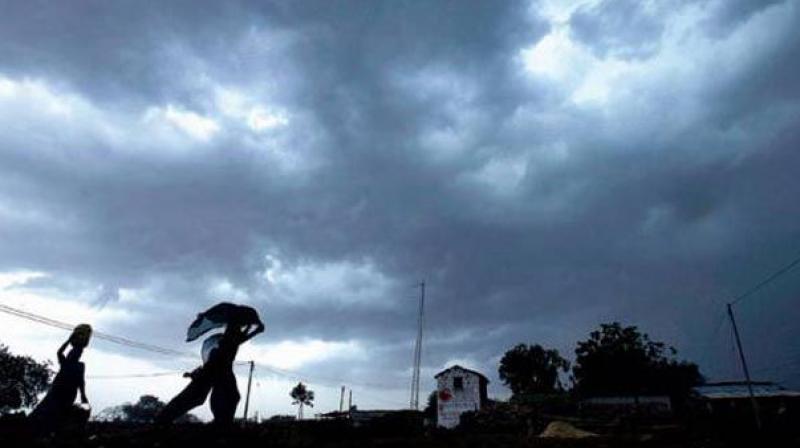More flash rain this year in Andhra Pradesh and Telangana
The rest of the rain is expected to be scattered over several episodes spread over three months.

Hyderabad: The monsoon on AP and TS this year will see extreme rainfall events, just like last year. This means that the two states, instead of receiving their average rainfall spread over four months from June to September can expect to get half the quantity in just one month.
This phenomenon is called flash rain. TS receives an average 75 cm of rainfall during the season, coastal Andhra 55 cm and Rayalaseema 38 cm.
The rest of the rain is expected to be scattered over several episodes spread over three months. If weather officials are to be believed, there will be no ‘rainy days’ of yore.
The phenonemon of flash rain was seen last year. July and August are the important monsoon months, but there was scanty rainfall for 20 days in July last year.
There was heavy rainfall in September, and heavy to very heavy rainfall for a short duration on a few days. This change in pattern is due to climate change and affects the economy of the state, weather experts said.
In 2016, September rains destroyed crops worth crores. Many areas were inundated in Hyderabad along with several places in the two states.
“The state will definitely receive its average rainfall for the season, but the rain which is meant to occur throughout the four monsoon months will largely occur in one month (50 per cent of the total quantum),” said Mr Y.K. Reddy, director, IMD, Hyderabad.
“The extreme rainfall events does not allow rainy days in a stretch,” he said. Mr Narsimha Rao, former assistant meteorologist, said, “Extreme rainfall events will include moderate to heavy rain for 24 hours and it will be scanty in the rest of the days.”
Apart from climate change, which is responsible for the change in pattern, factors such a prolonged depression mainly in Bay of Bengal and Arabian Sea and active monsoons, contribute.
Besides, experts have said, urbanisation over large areas as in densely populated cities create their own ‘micro environment’.

